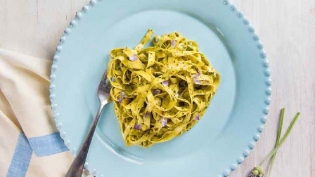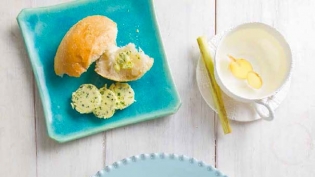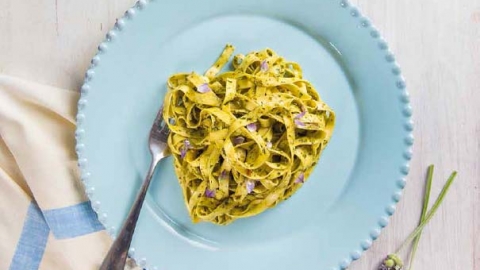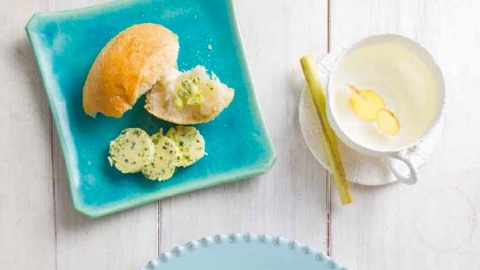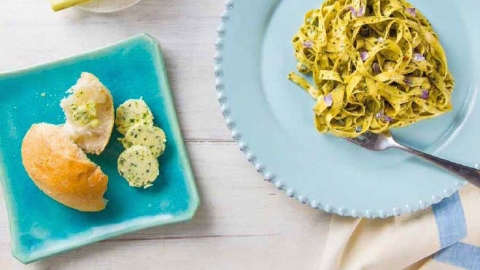Garden to Kitchen: Fresh, Simple, Seasonal
I’ve been called an overachiever many a time in my life. What can I say? I’m driven.
So it’s really no surprise that, when it comes to my garden, the overachievers steal my heart every time! Those golden currant tomatoes that produced like crazy all summer long, despite neglect and never-ending rain ... I loved them. The collard plants that thrived last fall in the raised bed of death where nothing else will grow ... they both wooed and awed me. And then there are the backyard banana trees, unashamedly and continuously bearing bunches of fruit -- such sweet loves are they.
I’ve been cultivating love affairs with a few herbaceous types lately too. With their bold flavors, heady aromas, and medicinal properties, all herbs are really quite enchanting. But a few perpetually producing, self-sufficient, flavor-popping superstars are vying for my adoration. These ambitious, Florida-friendly herbs effortlessly make the transition from garden to kitchen—so I think they might win your affection too!
African Blue Basil
In the Garden: Voted as a Florida Garden Select choice by the Florida Nursery, Growers and Landscape Association in 2006, African blue basil gained my devotion after I brought home a small plant from the ECHO global farm in Fort Myers. (Pick one up closer to home at the Florida Native Plants Nursery). The little start quickly left my sweet basil in the dust: African blue basil can grow into a bush that’s four feet around! Plus, it’s a lot less needy—you never have to pinch off the flowers, as it will never go to seed and die. African blue basil offers a lot to admire: It’s drought-tolerant, it grows year-round here (protected from frost), and it produces lovely, fragrant green and purple leaves, as well as a pretty lavender-pink flower that attracts all kinds of bees.
In the Kitchen: African blue basil is endearing in the kitchen too. Its leaves, flowers, and stems are all edible and have an earthy, clove-like flavor. Use the leaves to enhance and garnish soups, salads, and roasted veggies, or swap it in place of traditional basil in recipes. Try floating the blossoms in lemonade, ginger ale, and champagne, or sprinkle them on strawberry ice cream. I’ve become especially fond of using African blue basil in pesto, where I incorporate both the leaves and blossoms, along with dried lavender buds, for a subtle floral flavor.
Lemongrass
In the Garden: I was first attracted to lemongrass by its impressively quick growth and dramatic size. After planting a small start in the spring, I had lemongrass taller than me by the end of the summer (it grows slower in cooler months). However, this super-sized tropical herb (up to six feet tall and three feet wide) is enamoring in more ways than one: It will grow year-round through warm winters, it does double-duty as an ornamental grass, and it is naturally pest-resistant— in fact, it’s often grown specifically to repel mosquitoes from outdoor living spaces.
In the Kitchen: I’m still flirting with lemongrass in the kitchen. The entire plant can be used for cooking, adding a zesty, lemony flavor and aroma to a variety of dishes. Lemongrass stalks can be crushed and placed in the bottom of foil wrappings with meat or vegetables; tucked in the cavity of a whole chicken before roasting; simmered in soups and sauces; and chopped and added to stir-fries. This multifaceted herb is good for you, too: It’s high in antioxidants, it acts as a diuretic, it relieves gas and stomach discomfort, and it is antimicrobial and anti- fungal. I’ve taken to simmering lemongrass leaves and stalks in water, with fresh ginger, to make a refreshing, lemony tea.
Garlic Chives
In the Garden: I’m also smitten with the hardy and flavorful garlic chive. This herb is distinguished from the more common onion chive by its leaves, which are wider, flatter, and more grass-like (vs. skinny and hollow). Garlic chives are eager to impress: They grow twice as large as common chives, they remain evergreen through our warm winters, they are drought-tolerant, and they even self-expand, producing new “clumps” that can be divided from the main plant. Once established, garlic chive plants produce clusters of edible white flowers in mid to late summer.
In the Kitchen: Garlic chives are equally appealing in the kitchen. I fancy them chopped and added to salads, soups, baked potatoes, sautéed veggies, and especially scrambled eggs. One of my favorite ways to enjoy this herb (or any herb, for that matter) is mixed into butter that can be spread, drizzled, or dolloped ... onto crusty bread, seared meat, root vegetables, whatever! Garlic chive butter is good enough to eat plain, so to offset the guilt of excessive butter consumption, consider the medicinal properties of this hardworking herb: It helps improve digestion, it has a diuretic effect, and it helps promote blood circulation.



